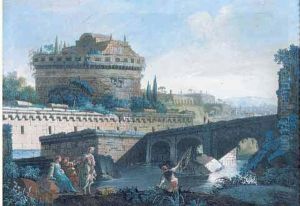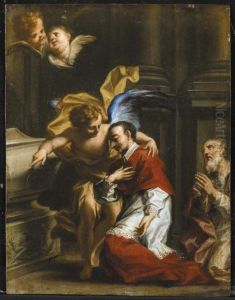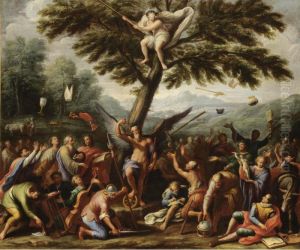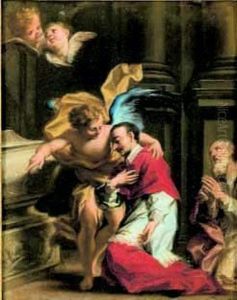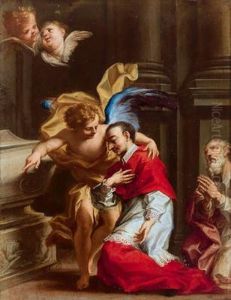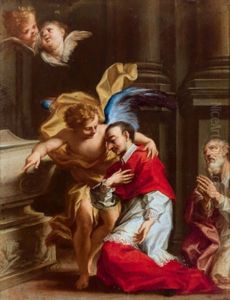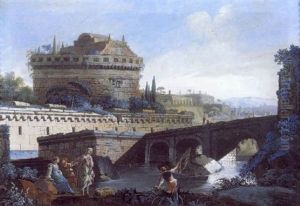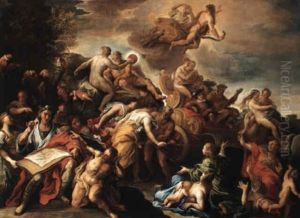Francesco Caccianiga Paintings
Francesco Caccianiga was an Italian painter who was born in Milan in 1700. He was known for his work in the Rococo style, which was popular in Europe in the 18th century. Caccianiga's work often depicted light-hearted and frivolous subjects, characteristic of the Rococo aesthetic, with a particular emphasis on elegance and decorative elements.
Caccianiga was trained by his father, who was also a painter, and later continued his studies under prominent artists of his time. His early works reflect the influence of his teachers but as he matured, he developed a distinctive style of his own. Caccianiga's paintings typically featured pastel colors, soft lighting, and delicate brushwork, which contributed to the overall sense of airiness and grace in his compositions.
Throughout his career, Francesco Caccianiga remained active in Milan, where he received commissions for both religious and secular works. He painted altarpieces for churches, as well as portraits and mythological scenes for private patrons. Despite the popularity of the Rococo style during his lifetime, Caccianiga's work also demonstrates a sensitivity to the changing tastes of the art world, as the Rococo began to give way to the more sober and moralizing sentiments of Neoclassicism towards the end of his career.
Caccianiga's contribution to Italian Rococo art is noted for its charm and technical skill. His works are preserved in various collections and churches in Italy, providing insight into the artistic trends and cultural milieu of 18th-century Milan. Francesco Caccianiga passed away in 1781, leaving behind a body of work that continues to be appreciated for its elegance and historical value.

